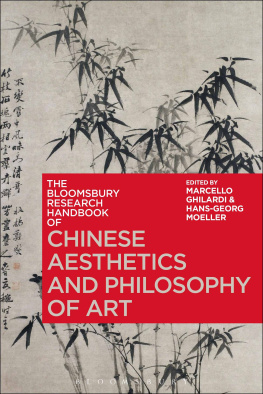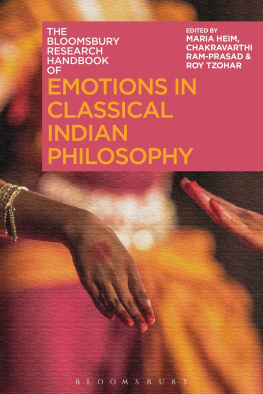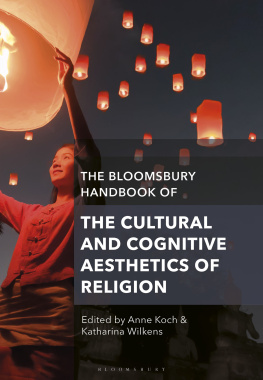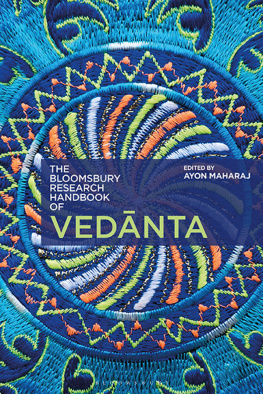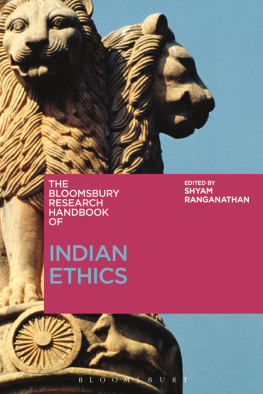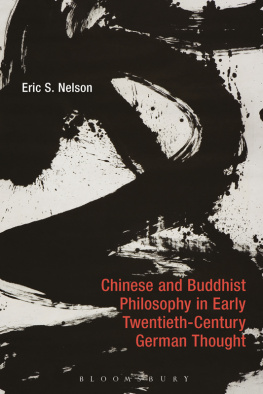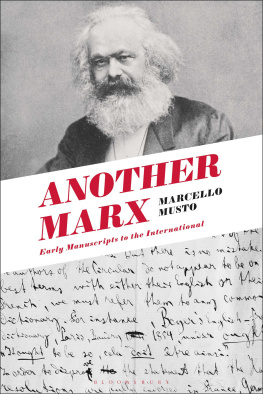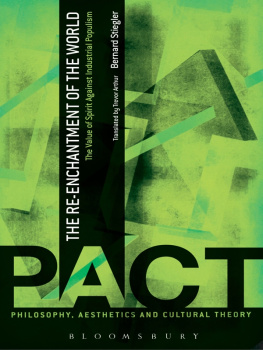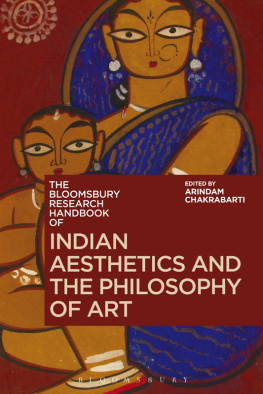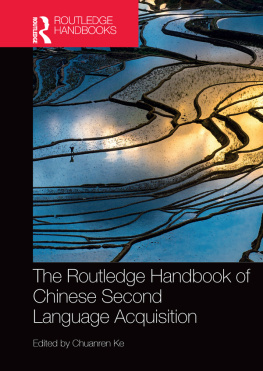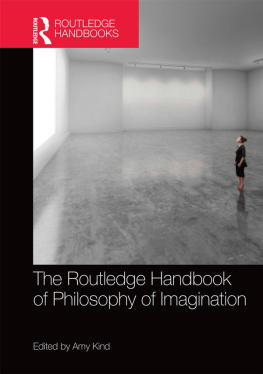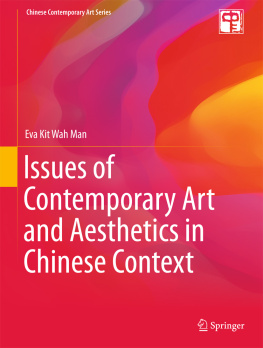Marcello Ghilardi - The Bloomsbury Research Handbook of Chinese Aesthetics and Philosophy of Art
Here you can read online Marcello Ghilardi - The Bloomsbury Research Handbook of Chinese Aesthetics and Philosophy of Art full text of the book (entire story) in english for free. Download pdf and epub, get meaning, cover and reviews about this ebook. year: 2021, publisher: Bloomsbury UK, genre: Science. Description of the work, (preface) as well as reviews are available. Best literature library LitArk.com created for fans of good reading and offers a wide selection of genres:
Romance novel
Science fiction
Adventure
Detective
Science
History
Home and family
Prose
Art
Politics
Computer
Non-fiction
Religion
Business
Children
Humor
Choose a favorite category and find really read worthwhile books. Enjoy immersion in the world of imagination, feel the emotions of the characters or learn something new for yourself, make an fascinating discovery.
- Book:The Bloomsbury Research Handbook of Chinese Aesthetics and Philosophy of Art
- Author:
- Publisher:Bloomsbury UK
- Genre:
- Year:2021
- Rating:5 / 5
- Favourites:Add to favourites
- Your mark:
- 100
- 1
- 2
- 3
- 4
- 5
The Bloomsbury Research Handbook of Chinese Aesthetics and Philosophy of Art: summary, description and annotation
We offer to read an annotation, description, summary or preface (depends on what the author of the book "The Bloomsbury Research Handbook of Chinese Aesthetics and Philosophy of Art" wrote himself). If you haven't found the necessary information about the book — write in the comments, we will try to find it.
Marcello Ghilardi: author's other books
Who wrote The Bloomsbury Research Handbook of Chinese Aesthetics and Philosophy of Art? Find out the surname, the name of the author of the book and a list of all author's works by series.
The Bloomsbury Research Handbook of Chinese Aesthetics and Philosophy of Art — read online for free the complete book (whole text) full work
Below is the text of the book, divided by pages. System saving the place of the last page read, allows you to conveniently read the book "The Bloomsbury Research Handbook of Chinese Aesthetics and Philosophy of Art" online for free, without having to search again every time where you left off. Put a bookmark, and you can go to the page where you finished reading at any time.
Font size:
Interval:
Bookmark:

HANDBOOK OF CHINESE
AESTHETICS AND PHILOSOPHY
OF ART
Bloomsbury Research Handbooks in Asian Philosophy
Series Editors
Chakravarthi Ram-Prasad, Lancaster University, UK
Sor-hoon Tan, National University of Singapore, Singapore
Editorial Advisory Board
Roger Ames, Professor of Philosophy, Peking University, Beijing, China; Doug Berger, Associate Professor of Philosophy, Leiden University, The Netherlands; Carine Defoort, Professor of Philosophy, KU Leuven, Belgium; Owen Flanagan, James B. Duke Professor of Philosophy, Duke University, USA; Jessica Frazier, Lecturer in Religious Studies, University of Kent, UK; Chenyang Li, Professor of Chinese Philosophy, Nanyang Technological University, Singapore; Ronnie Littlejohn, Professor of Philosophy, Director of Asian Studies, Belmont University, USA; Evan Thompson, Professor of Philosophy, University of British Columbia, Canada
Bringing together established academics and rising stars, Bloomsbury Research Handbooks in Asian Philosophy survey philosophical topics across all the main schools of Asian thought. Each volume focuses on the history and development of a core subject in a single tradition, asking how the field has changed, highlighting current disputes, anticipating new directions of study, illustrating the Western philosophical significance of a subject, and demonstrating why a topic is important for understanding Asian thought.
From knowledge, being, gender, and ethics, to methodology, language, and art, these research handbooks provide up-to-date and authoritative overviews of Asian philosophy in the twenty-first century.
Available Titles
The Bloomsbury Research Handbook of Chinese Philosophy and Gender, edited by Ann A. Pang White
The Bloomsbury Research Handbook of Chinese Philosophy Methodologies, edited by Sor-hoon Tan
The Bloomsbury Research Handbook of Contemporary Japanese Philosophy, edited by Michiko Yusa
The Bloomsbury Research Handbook of Early Chinese Ethics and Political Philosophy, edited by Alexus McLeod
The Bloomsbury Research Handbook of Emotions in Classical Indian Philosophy, edited by Maria Heim, Chakravarthi Ram-Prasad, and Roy Tzohar
The Bloomsbury Research Handbook of Indian Aesthetics and the Philosophy of Art, edited by Arindam Chakrabarti
The Bloomsbury Research Handbook of Indian Ethics, edited by Shyam Ranganathan
The Bloomsbury Research Handbook of Indian Philosophy and Gender, edited by Veena R. Howard
The Bloomsbury Research Handbook of Indian Philosophy of Language, edited by Alessandro Graheli
The Bloomsbury Research Handbook of Vednta, edited by Ayon Maharaj
In memory of Stefano Zacchetti (19682020),Yehan Numata Professor of Buddhist Studies and Professorial Fellow at Balliol College, University of Oxford

| (public domain) |
| (public domain) |
| (public domain) |
A work of intellect such as a book is always, in certain ways, a collective work where different paths converge and intertwine. The present volume is the result of the efforts of a multiplicity of scholars, schools of thought, traditions, and perspectives. In general, gratitude is owed to all the contributors, and beyond them to the teachers and models who instructed all of us and led us on the path of aesthetics and philosophy.
The editors are indebted to two most competent collaborators, Daniel Sarafinas and Robbert Zandbergen, for their instrumental and meticulous proofreading of all submitted drafts.
We owe a special thanks to Colleen Coalter and Becky Holland at Bloomsbury Academic: they both strongly believed in the project from its very beginning and provided very kind, professional, and sensitive guidance.
We are grateful for financial support received from the University of Macau (MYRG2018-00002-FAH and MYRG2016-00013-FAH).
Every effort has been made to trace copyright holders and to obtain their permission for the use of copyright material in this book. The publisher apologizes for any errors or omissions and would be grateful if notified of any corrections that should be incorporated in future reprints or editions of this book.
MARCELLO GHILARDI and HANS-GEORG MOELLER
1. A philosophers task is, among many others, to shed light on the categories and the notions we use in order to avoid misunderstandings, deluding ambuiguities, or fallacies. When we inattentively apply categories that developed out of a specific cultural context to a different tradition, or more specifically when we delve into the fascinating and yet dangerous practice of translation, we must be aware of some risks. At the same time, we know that translating and dealing with other frameworks or conceptual patterns is the only way to gain entry to the possibility of a diverse way of thinking. To prevent, on the one hand, a trivial relativism and, on the other hand, a subtle form of cultural colonialism, we should proceed step by step, with a sequential approach, multiple inquiries, different perspectives, through a patient and never-ending assimilation of those frameworks and ideas, digging ourselves out of our preconceived ideas. In other words, we need to be prepared to undergo changes and a certain intellectual and personal transformation.
Concerning the Song (9601279), the term yi underwent an important change in the Chinese treatises, and its meaning began to include poetry, music, calligraphy, and painting.
In this light, when Western essays on art and aesthetics began to be translated into Chinese in the second half of the nineteenth century, the notion was ready to be adoptedand adaptedto receive the modern European meaning. In the same period, mainly through the mediation of Japanese translations, the term meixue was introduced to convey the meaning of aesthetics, focusing on the idea of beautiful (mei). Given that aesthetics in the Western context can mean different approachesnot only a study on beauty, but also a theory of perception or a philosophy of artistic experiencein Japan and China the term included all possible meanings of the discipline, even if it seemed to be centered on the character mei. Along the neologisms adopted in Japanese and Chinese in those decades, it is worthwhile to mention also the term philosophy, zhexue
was introduced to convey the meaning of aesthetics, focusing on the idea of beautiful (mei). Given that aesthetics in the Western context can mean different approachesnot only a study on beauty, but also a theory of perception or a philosophy of artistic experiencein Japan and China the term included all possible meanings of the discipline, even if it seemed to be centered on the character mei. Along the neologisms adopted in Japanese and Chinese in those decades, it is worthwhile to mention also the term philosophy, zhexue , that eventually became one of the numerous concepts that were inculturated in the East Asian countries at the turn of the century.
, that eventually became one of the numerous concepts that were inculturated in the East Asian countries at the turn of the century.
These short remarks, with a philological flavor, appear to be necessary to introduce a book on Chinese aesthetics and philosophy of art. If aesthetic experience appears to be a universal dimension, and art as a human practice can be testified in all cultures (taking into account all the possible definitions of art), it is no less true that in the centuries-long tradition of treatises on poetry, calligraphy, and painting, the Chinese scholars almost never used the category of beauty or aesthetics to describe an accomplished work of art. Thus, the modern scholars choice to use a term such as study of beauty (
Next pageFont size:
Interval:
Bookmark:
Similar books «The Bloomsbury Research Handbook of Chinese Aesthetics and Philosophy of Art»
Look at similar books to The Bloomsbury Research Handbook of Chinese Aesthetics and Philosophy of Art. We have selected literature similar in name and meaning in the hope of providing readers with more options to find new, interesting, not yet read works.
Discussion, reviews of the book The Bloomsbury Research Handbook of Chinese Aesthetics and Philosophy of Art and just readers' own opinions. Leave your comments, write what you think about the work, its meaning or the main characters. Specify what exactly you liked and what you didn't like, and why you think so.

